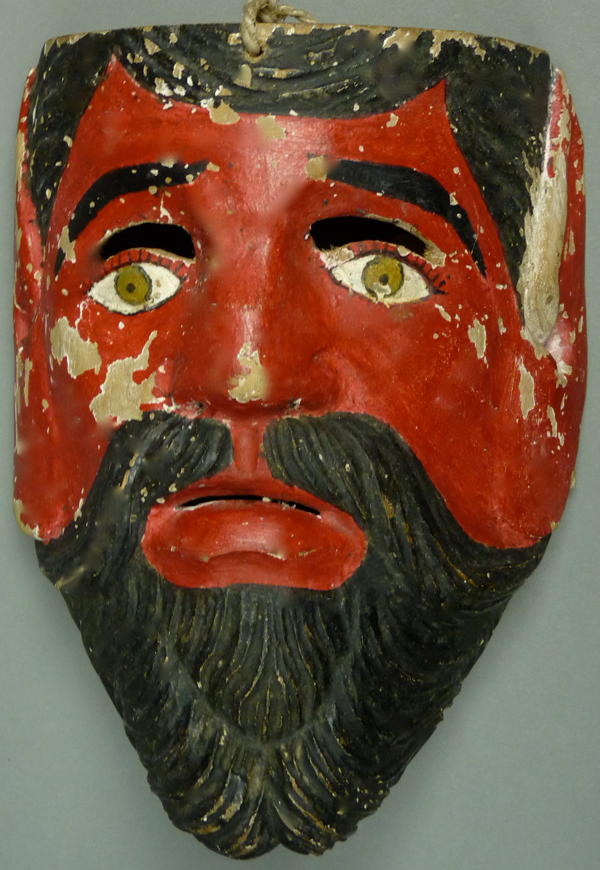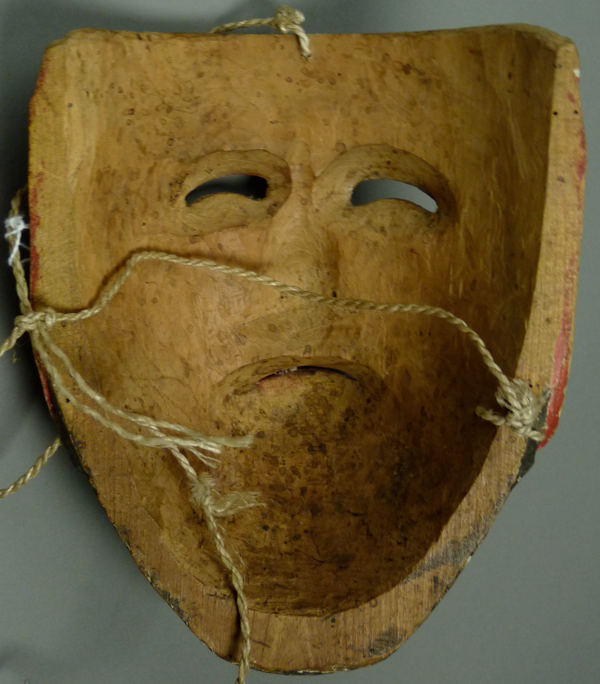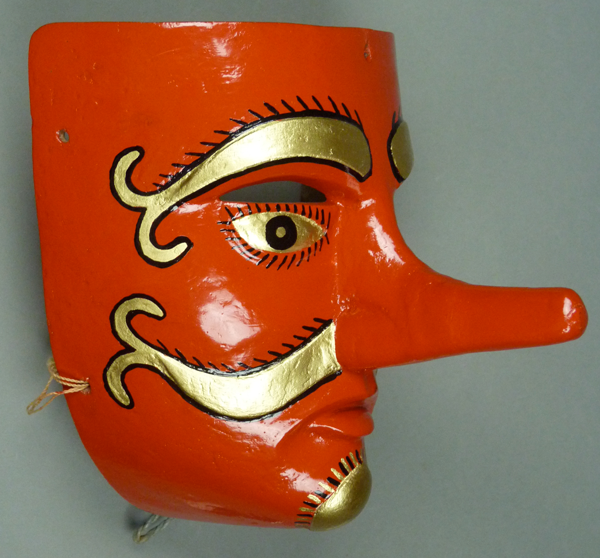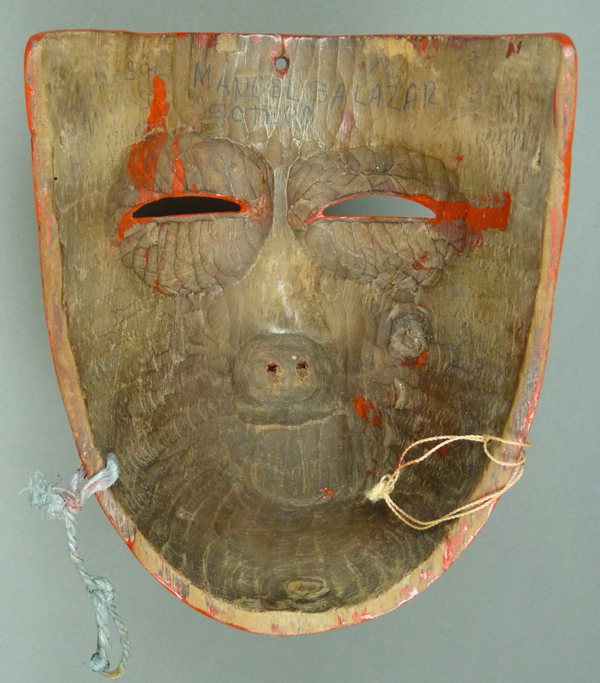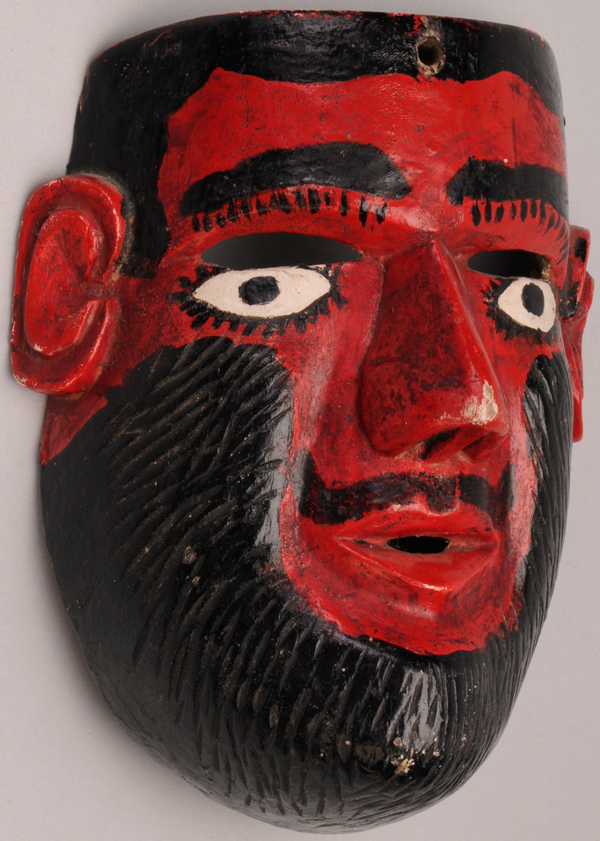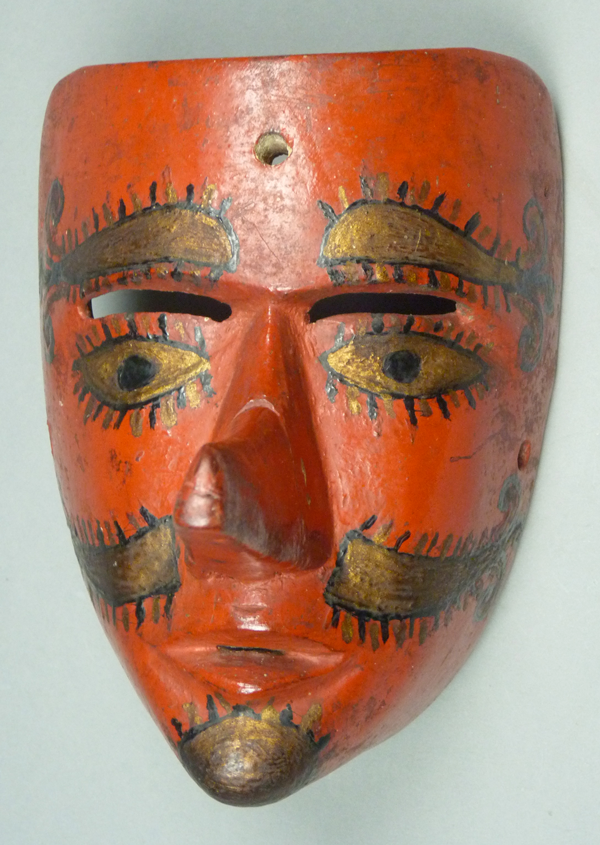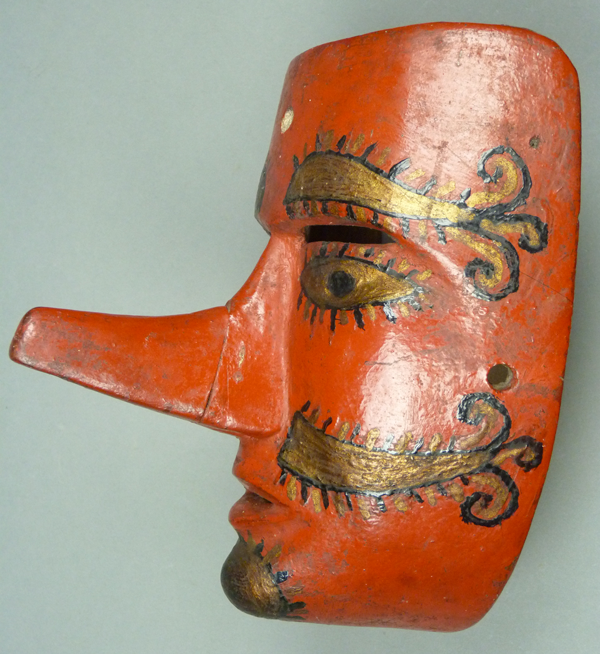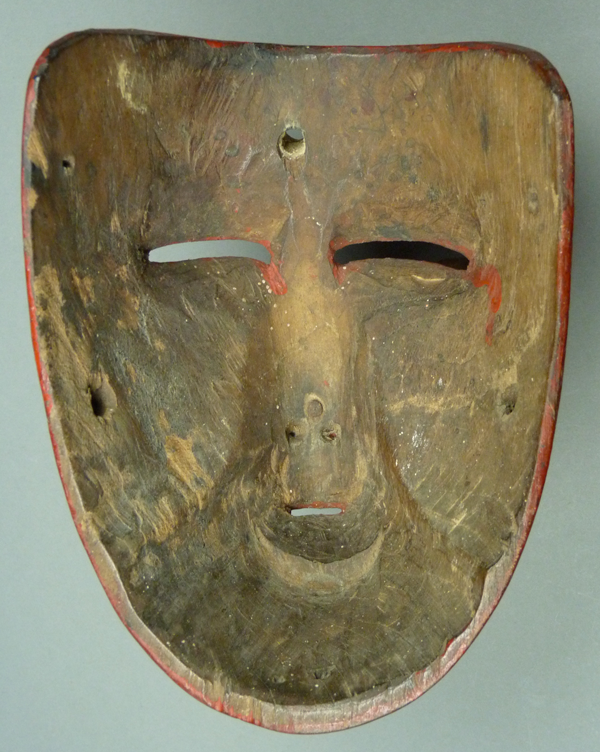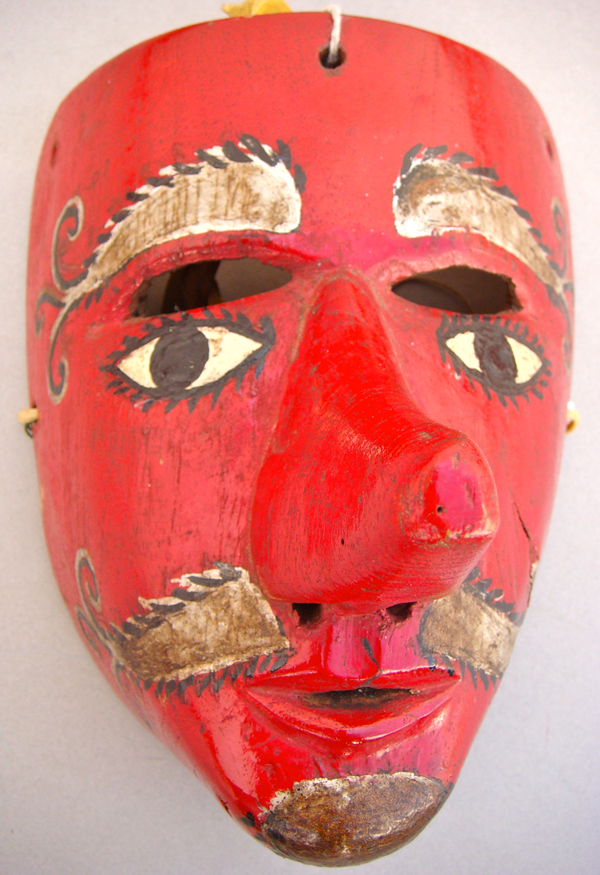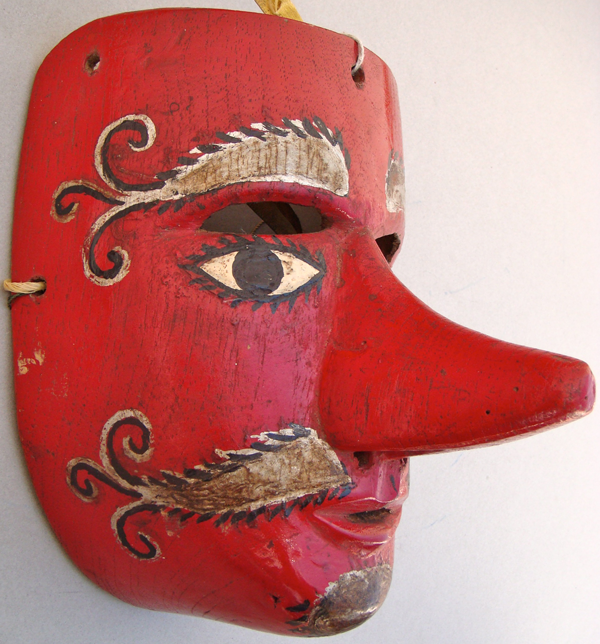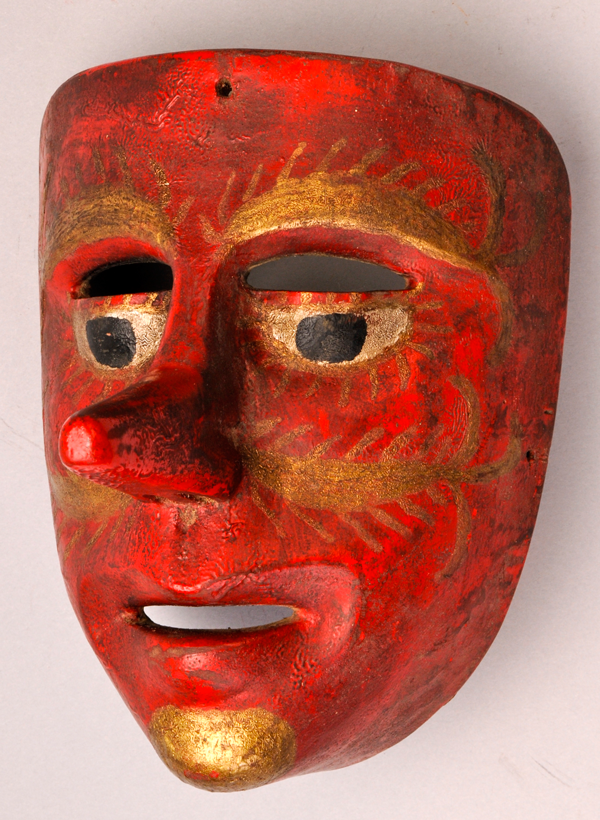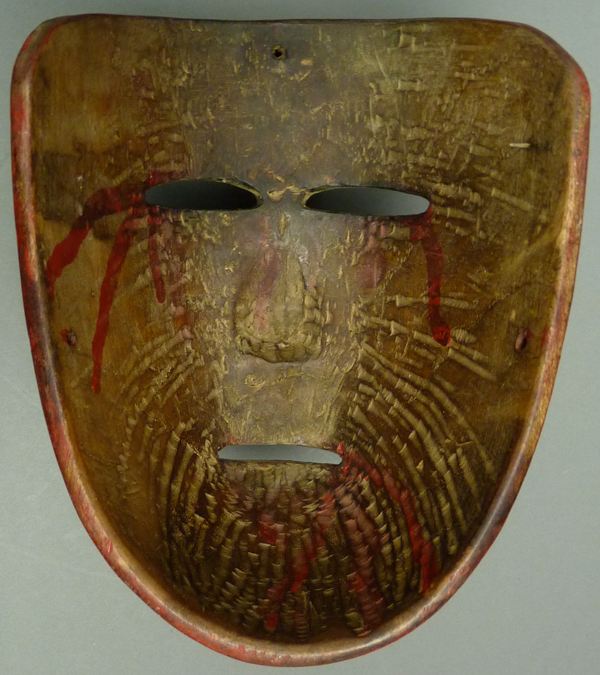In December of 2010 Carlos Moreno Vasquez and I visited the Olintla home of the owner of the masks for the Hormegas dance. The owner was not there at the time, but a relative was kind enough to retrieve the dusty masks from their storage place above the rafters and I was allowed to take photos. However, the relative felt that she lacked the authority to grant permission on behalf of the owner for their publication. Later the owner sold an Hormega mask to Carlos which was similar to two others that I had seen earlier and photographed; evidently it had also been part of the group. In contrast to the others, this one was freshly repainted. After considerable study, Vernon and I concluded that there were four masks in that Hormegas dance set that had definitely been carved by Magno León: a mask of Pilato Malo (Bad Pilate/Pontius Pilate), two of the dusty old Hormega masks, and the newly repainted Hormega mask, which shared many but not all of the features of the other two.
I added the freshly repainted Hormega to my collection and later I commissioned Carlos to make a special trip to Olintla for the sole purpose of buying or trading for the Pilato Malo mask, which he successfully accomplished. This means that I have two of the masks by Magno León from the Olintla Hormegas dance group to show you today. I will compare Magno’s carving style for these Hormega masks to the styles of two other carvers, Benito Juárez Figueroa and Leopoldo (“Polo”) Cortez González. You will have the opportunity to see that the work of these three is quite similar, but yet each one’s style can be distinguished from the others by careful observation of their back designs.
I went to great lengths to obtain this mask because it is so interesting. Despite the title of the dancer who wears this mask—Pilato—this is actually a mask of Satan disguised as Pilato. The clue to this is his ears. From the masks in an earlier post, we know the typical design used by Magno León to carve human ears, but this mask has the ears of a goat, conforming to the European Christian formula to depict the devil. Although this is evident from the front, it is more obvious in the side view. Otherwise, as you will be able to see for yourself, this is a typical example of a high end mask by Magno León, with finely carved hair and beard, arched vision slits with rounded ends, relief carved eyes, his typical nose with a groove underneath, and a carefully sculpted lower lip. Despite the flaking paint, this is a very fine mask.
The goat’s ears are very large, extending down to the margin of the beard.
I would like you to particularly notice Magno’s carving of the back, using the typical design that I demonstrated in my post of November 10, 2014. This mask is 8½ inches tall, 7 inches wide, and 4 inches in depth.
Magno’s polished back design has three typical features—beveled oval areas around the eyes, a recess to accommodate the dancer’s nose, and a bowl-shaped recessed area to create space around the wearer’s mouth. The purpose of this last feature may be to permit easy air exchange (breathing).
Now I will discuss the Hormega mask that was also carved by Magno León, along with two others of his that I observed in Olintla , Puebla. All three had vision slits like those on this mask, flatter and narrower compared to those you have already seen. The other two had grooved and relief carved brows, mustaches, and goatees, while those features were carved in low relief on this mask but not grooved. All three had painted eyes that were carved in very low relief (so low that this difficult to see in the photos) and all three had the same carved mouth design. The other two had long noses with round ends that look like the ends of broomsticks, but the nose on this mask is more slender and triangular in cross section. There is greater variation on the backs, as the other two have the expected classical design, while the one illustrated has the typical carved rings around the openings, a round indentation for the nose, and no additional hollowing for the mouth. In other words, the repainted mask is sufficiently similar to the other two Hormega masks to assign it to the same carver, yet one wonders why it has these differences. There is one additional difference which may help to explain—the illustrated mask appears to be far older than the Pilatos mask and the other two Hormega masks, with much greater staining from use. Therefore it may reflect an earlier style for this carver. I observed such variation over time in the masks of Benito Juárez Figueroa, the carver I introduced in the earliest posts of this blog. Benito carved Hormega masks that were only slightly different from those of Magno, but a knowledgible person can easily tell them apart.
This mask is 7 inches tall, 6 inches wide and 5½ inches deep. Note the subtle relief carving of the brows, the mustache, and the goatee. The new paint has softened the original lines of these features, although they are still apparent.
Notice that this older mask does have the beveled oval area around the eyes and there is a recess for the dancer’s nose, although this has a simpler design. The bowl-shaped hollow for the mouth is not seen. Two similar Hormega masks in a dance group in Olintla had the classic back design like that on the Pilato Malo mask.
I began with these masks in order to compare them to the work of two other carvers. Now I will show three masks by Leopoldo (“Polo”) Cortez González. You will see that Polo has an extremely distinctive back design. First we will examine the mask worn by an Ayudante in the Hormegas dance (an aide-de-camp or adjutant). This mask, which was found in the town of Vicente Guerrero, Puebla, in 2006 proved to be identical to a pair of masks in the set used in Olintla for the Hormegas dance.
This is the Ayudante mask carved by Polo González for the Hormegas dance. In the absence of the specific information from Olintla, we initially thought that this mask was from the dance of the Santiagueros. We can note in passing that, like all of the carvers in the Sierra de Puebla, Polo has his own ear design. However the design of the backs of his masks is so much more like a signature. This mask is 8inches tall, 6½ inches wide and 4 inches deep.
Like Magno León, Polo González would take pains to carve a special recessed area to accommodate the wearer’s mouth and to facilitate breathing. But how different his solution is from that of Magno! Polo creates a tapering gulley, wide at the chin and narrowing above the mouth. Above this there is a more shallow groove to clear the bridge of the nose. There are oval beveled areas around the eyes, but they are roughly carved and rudimentary; it is the lower gulley that is so distinctive.
Now I will share photos of two Hormega masks by Polo. These were found in Olintla, and closely resemble two others that I documented in the Olintla Hormega dance group. All four of these had the same back design as that of the Ayudante mask. Here is one of the Hormega masks by Polo González.
This mask is 7 inches tall, 5½ inches wide and 5¼ inches deep.
Note the tapering gulley.
Here is another Hormega mask by Polo. The photos of this mask are courtesy of Vernon Kostohryz.
This photo provides a particularly clear view of Polo’s back design.
Now, for further contrast, a quick look at another Hormega mask, this one by Benito Juárez Figueroa.
On the face, this mask is only a little different from the Hormega masks by Magno and Polo.
On the other hand, I think you will easily see how different the back of this mask is, compared to those of Magno León and Polo González.
Next week I will show five Hormega masks by this carver, Benito Juárez Figueroa. Happy Thanksgiving.

